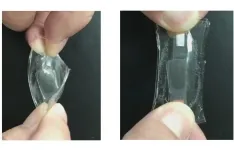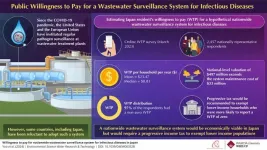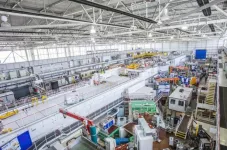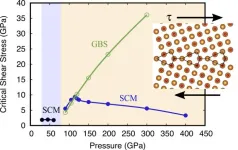(Press-News.org) COLUMBUS, Ohio – Pet cats may be excellent animal models for the study of obesity origins and treatment in humans, a new study of feline gut microbes suggests – and both species would likely get healthier in the research process, scientists say.
Veterinary researchers analyzed fecal samples from fat cats as the animals lost and maintained weight over the course of four dietary changes, including strict calorie reduction. The team found that food-related changes to the cats’ gut microbiome – the assortment of bacteria and molecules those bacteria produce and consume – have striking similarities to dietary effects on the gut previously seen in humans.
Though there is still a lot to learn, the findings place pet cats at the top of the list of animals whose gut bacteria may tell us a lot about our own – and whether gut microbe-based therapy could be one way to battle obesity.
“Animals share our beds. They share our ice cream. There are all these things that people do with their pets that highlight they are a naturally occurring disease model with similar environmental exposures as humans,” said lead study author Jenessa Winston, assistant professor of veterinary clinical sciences at The Ohio State University.
“Being able to see changes in cats that come up in the context of obesity and type 2 diabetes in people makes them a really good model to start looking at more microbiome-directed therapeutics for obesity in humans if we’re seeing a similar shift,” she said. “Microbes we saw in this study also come up again and again in human studies – and clearly, people aren’t eating cat chow, right?”
The study was published recently in the journal Scientific Reports.
An estimated 60% of cats are obese or overweight in developed countries, and more than 2 in 5 adults in the United States have obesity, according to the Centers for Disease Control and Prevention.
At Ohio State, Winston oversees two large clinical trials exploring the potential for fecal transplants from lean dogs and cats to help their overweight pet peers lose weight.
“My lab is focused on how we can harness the therapeutic power of microbes,” she said. “In order to do that, we have to understand how disease states may be different from health so that we can better try and figure out and target, mechanistically, changes that occur in the microbiome.”
In this study, researchers fed seven obese cats a four-phase diet over 16 weeks: free-feeding of commercial cat food for two weeks, free-feeding of a specially formulated weight-loss diet for one week, calorie-restricted feeding of the weight-loss diet to achieve 1-2% body weight reduction per week for 11 weeks, and a return to the original maintenance diet.
The analysis of fecal samples taken during the different diet phases focused on changes in the presence of short-chain fatty acids metabolites, molecules produced by bacteria during digestion. Fatty acids are of interest because they prompt specific types of communication between gut microbes and tissue in the rest of the body – including hormonal signals that can relate to inflammation and insulin resistance.
The team found that the abundance of a short-chain fatty acid called propionic acid – shown in other mammals to regulate appetite, reduce fat accumulation and protect against obesity and diabetes – was increased in feces when the cats were losing weight on the calorie-restricted diet. Greater propionic acid composition was associated with an increase in the bacterium Prevotella 9 copri. Though direct production of propionic acid by Prevotella couldn’t be determined in this study, the finding that these increases occurred at the same time, when cats were dropping weight, was intriguing. Previous research has linked Prevotella 9 copri in the human gut to weight loss and better blood sugar control.
“When the cats are on the special diet formulated for weight loss, propionic acid goes up and stays high, and then goes back down when they’re put back on the maintenance diet. So it really is a dietary change,” Winston said. “This paper highlights that when we calorie-restrict cats that are obese, we can alter their microbial ecosystem – and those community shifts that we see likely correlate with some metabolic outcomes.
“I think that those parallels that we’re seeing in how the ecosystems change in a similar way is helpful,” she said.
The gut microbiome’s precise role in mammal obesity remains a mystery, but Winston said decades of evidence suggests these organisms and molecules they produce are part of the problem behind what is now known to be a very complex disease. This study’s findings in felines suggest the pet cat gut profile could provide meaningful answers for both species, she said.
The weight-loss diet in the study was provided by Nestle Purina, which also provided funding for the project. Winston and some co-authors are paid speakers for Nestle Purina.
Co-authors include John Rowe, Valerie Parker and Adam Rudinsky of Ohio State; Katie McCool of North Carolina State University; Jan Suchodolski, Rosana Lopes and Jörg Steiner of Texas A&M University; and Chen Gilor of the University of Florida.
#
Contact: Jenessa Winston, Winston.210@osu.edu
Written by Emily Caldwell, Caldwell.151@osu.edu; 614-292-8152
END
Opioid medications offer people relief from debilitating pain, but these drugs come with dangers: the risk for addiction, miserable withdrawal symptoms and the potential for fatal overdose. In a study in ACS Central Science, researchers have identified a strategy to design safer opioids. They showed that an experimental opioid, which binds to an unconventional spot in the receptor, suppresses pain in animal models with fewer side effects — most notably those linked to fatal overdoses.
Opioid medications tap into the body’s natural system for mitigating pain by activating pain-suppressing ...
When you think of a battery, you probably don’t think stretchy. But batteries will need this shape-shifting quality to be incorporated into flexible electronics, which are gaining traction for wearable health monitors. Now, researchers in ACS Energy Letters report a lithium-ion battery with entirely stretchable components, including an electrolyte layer that can expand by 5000%, and it retains its charge storage capacity after nearly 70 charge/discharge cycles.
Electronics that bend and stretch need batteries with similar properties. Most researchers who have ...
DALLAS, July 17, 2024 — About 1 in 3 U.S. adults have at least three risk factors for cardiovascular-kidney-metabolic (CKM) syndrome, a health disorder related to the strong connections among cardiovascular disease, kidney disease and metabolic disease (such as Type 2 diabetes and obesity).[1] Yet there is no single clinical practice guideline to treat people with CKM syndrome, and gaps exist in preventing, screening, managing and comprehensively treating these diseases.
To address this complex health threat, the American Heart Association, ...
It’s no secret that the caregivers of spouses with memory impairment face enormous amounts of stress. Researchers at Rice University have found that this intense pressure can be felt at the cellular level and is linked to negative physical and mental health effects, including dementia and Alzheimer’s disease.
The study titled “Mitochondrial health, physical functioning, and daily affect: Bioenergetic mechanisms of dementia caregiver well-being,” is published online ...
Globally, the COVID-19 pandemic and the increased likelihood of other such outbreaks in the future warrant the strengthening of epidemic surveillance systems. Among these, continuous wastewater surveillance at wastewater treatment plants is considered more advantageous for understanding the community-level disease dynamics, as compared to clinical surveillance. This is because such a continuous system captures the epidemic status of a larger population without any selection bias and provides higher testing capacity even during an outbreak. Moreover, such a system is relatively inexpensive. ...
New experimental results show particles called muons can be corralled into beams suitable for high-energy collisions, paving the way for new physics.
Particle accelerators are best known for colliding matter to probe its make-up, but they are also used for measuring the chemical structure of drugs, treating cancers, and manufacturing silicon microchips.
Current accelerators use protons, electrons and ions, but more powerful accelerators using muons – heavier cousins of electrons – have the potential to revolutionise the field. Muon accelerators would ...
Hydrogels have a variety of use cases, including contact lenses, delivering doses of medication within the body, moisturisers, water storage in soil, cleaning polluted water and as gelling and thickening agents. A hydrogel is a gel made of a type of plastic that can bind water. Researchers at ETH Zurich and Empa have now developed the first hydrogel implant designed for use in fallopian tubes. This innovation performs two functions: one is to act as a contraceptive, the other is to prevent the recipient from developing ...
WASHINGTON, D.C. — July 17, 2024 — The percentage of Americans who can afford and access prescription drugs and quality healthcare stands at a new low of 55%, a six-point decline since 2022, according to the West Health-Gallup Healthcare Affordability Index. The index was developed in 2021 to track the percentage of Americans who say they have avoided medical care or not filled prescription medications in the last three months and whether they believe they could afford care if they needed it ...
Mantle convection and associated plate tectonics of planets like the Earth are governed by the deformation of mantle rocks. This deformation occurs through the motion of defects in the crystal lattices of minerals. Thus the physical properties of these structural defects under pressure have profound implications on the dynamics of Earth-like planets.
Our collaborative team of researchers, led by Dr. Sebastian Ritterex, a former post-doc of the Geodynamics Research Center, Ehime University and now a researcher of the Department ...
Workplace bullying against women in Pakistan is driving emotional exhaustion and job dissatisfaction among female workers, new research reveals.
A University of South Australia study reveals that workplace bullying is significantly undermining job productivity and hindering economic development in Pakistan, where women are seen as subordinates.
More than 300 female workers in Pakistan’s education and health sectors were surveyed on gendered workplace bullying.
Findings from in-depth interviews revealed women had experienced various bullying behaviours against them including verbal, emotional, social, and physical/sexual ...





